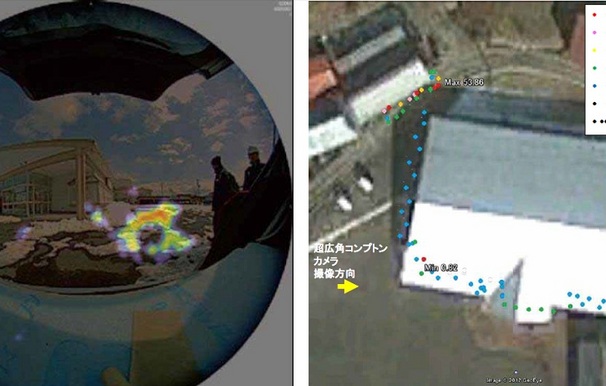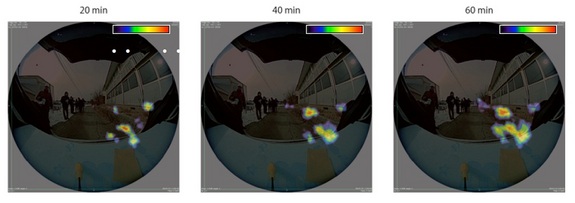New Camera Sees Japan's Radiation Threats

One year after Japan's nuclear disaster, the invisible threat of radiation still lurks around homes and businesses near the Fukushima Dai-ichi power plant. Now, a new camera based on Japanese space technology has allowed humans to see the radioactive contamination around the nuclear plant's emergency evacuation zone.
Such camera technology works by detecting radioactive particles that give off gamma rays — the highest-energy form of light in the universe. The Japan Aerospace Exploration Agency (JAXA) originally developed the technology for an upcoming X-ray observation satellite, called ASTRO-H, but successfully adapted the camera to spot Earthly radiation threats such as Cesium 137 and Cesium 134.
The camera's wide 180-degree vision showed radioactive particles spread across the ground and on rooftops of the village in the Fukushima Prefecture during a field test Feb. 11. Its results proved more accurate and capable of capturing a broader snapshot of the radioactive zone than existing cameras.

Such a space technology spinoff can also spot radioactivity in hard-to-reach places — such as building rooftops — where traditional survey meters can't go.
Researchers from JAXA, the Japan Atomic Energy Agency and Tokyo Electric Power Co. took part in testing the "Super-wide Angle Compton Camera" prototype. They plan to continue developing the camera for practical use in radioactive material decontamination work.
Some residents of the region surrounding the Fukushima nuclear plant have begun moving back to homes and farms. But Japan's government has kept a "no-go" zone that extends 12 miles (19 kilometers) around the nuclear facility because of the radiation threat.
This story was provided by InnovationNewsDaily, sister site to SPACE.com. Follow InnovationNewsDaily on Twitter @News_Innovation, or on Facebook.
Get the Space.com Newsletter
Breaking space news, the latest updates on rocket launches, skywatching events and more!
Join our Space Forums to keep talking space on the latest missions, night sky and more! And if you have a news tip, correction or comment, let us know at: community@space.com.

Space.com is the premier source of space exploration, innovation and astronomy news, chronicling (and celebrating) humanity's ongoing expansion across the final frontier. Originally founded in 1999, Space.com is, and always has been, the passion of writers and editors who are space fans and also trained journalists. Our current news team consists of Editor-in-Chief Tariq Malik; Editor Hanneke Weitering, Senior Space Writer Mike Wall; Senior Writer Meghan Bartels; Senior Writer Chelsea Gohd, Senior Writer Tereza Pultarova and Staff Writer Alexander Cox, focusing on e-commerce. Senior Producer Steve Spaleta oversees our space videos, with Diana Whitcroft as our Social Media Editor.









